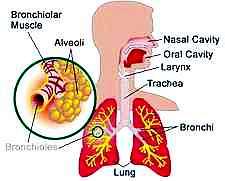Thursday, September 29
ACUTE BRONCHOPNEUMONIA
Reader Cris (are you my high-school classmate, by any chance?) asks about acute bronchopneumonia in my tagboard over at PARALLEL UNIVERSES. He says his son has just been diagnosed with the ailment, and I think he's quite worried.
Let us first know what acute means, and how to differentiate it with chronic. Acute is anything that happens abruptly as contrasted with chronic, which may be long-standing.
In the case of Cris' son, the diagnosis of acute bronchopneumonia means that the doctor has concluded that there was no respiratory illness of the same character in the child, say, a week or days before the consult. Why was the diagnosis not simply termed as "pneumonia," as we are all most familiar with? Why the prefix "broncho-?"
Why was the diagnosis not simply termed as "pneumonia," as we are all most familiar with? Why the prefix "broncho-?"
The prefix "broncho-" means that the doctor who made the diagnosis is quite sure that the pneumonia affecting the child is confined to the bronchiolar part of the lungs.
As with all other pneumonias, this illness is best described as inflammation of lung tissue, and manifests itself as cough, and notable fast and difficult breathing. The leading culprits are Streptococcus pneumoniae and Haemophilus Influenzae. Respiratory viruses like influenza, parainfluenza, RSV, and adenoviruses are likewise implicated, but they seldom cause fatal infection than their bacterial buddies. The best way to identify is to request a laboratory culture of the organism.
Pneumonia affects an estimated 5 to 10 percent of all children less than 5 years old, especially those living in developing countries like the Philippines. It is transmitted through person-to-person contact, and usually after touching or inhaling infected secretions.
Treatment is by the use of antibiotics or anti-retroviral medications. Prevention is still the best cure. This is achieved by proper hygienic practices, isolation of infected patients, and vaccination. Conjugate vaccines are available for H. influenza type B and S. pneumonia.
More information on this link: Bronchopneumonia and
See How the Lung with Bronchopneumonia Looks Like
Dr. Emer at 4:46 PM

2 Comments
- at 11:01 PM said...
Hi Doc Emer,
First i would like to thank you for granting my request re this topics. Second, im not your classmate nor we are far strangers to each other. By chance i just got into your blog thru blog hoppin. Third, i have search the net re the topic but i did not get this kind of explanation you have provided.You explain it well and i really appreciate and very thankful for the time you spend on my request. To follow my son is now having medication taking refam kit for 6 months.
Again very much thanks and God bless.- at 6:12 AM manel said...
rifampicin for bronchopneumonia?
anyways, nice site u have here doc emer. ;p cool.

